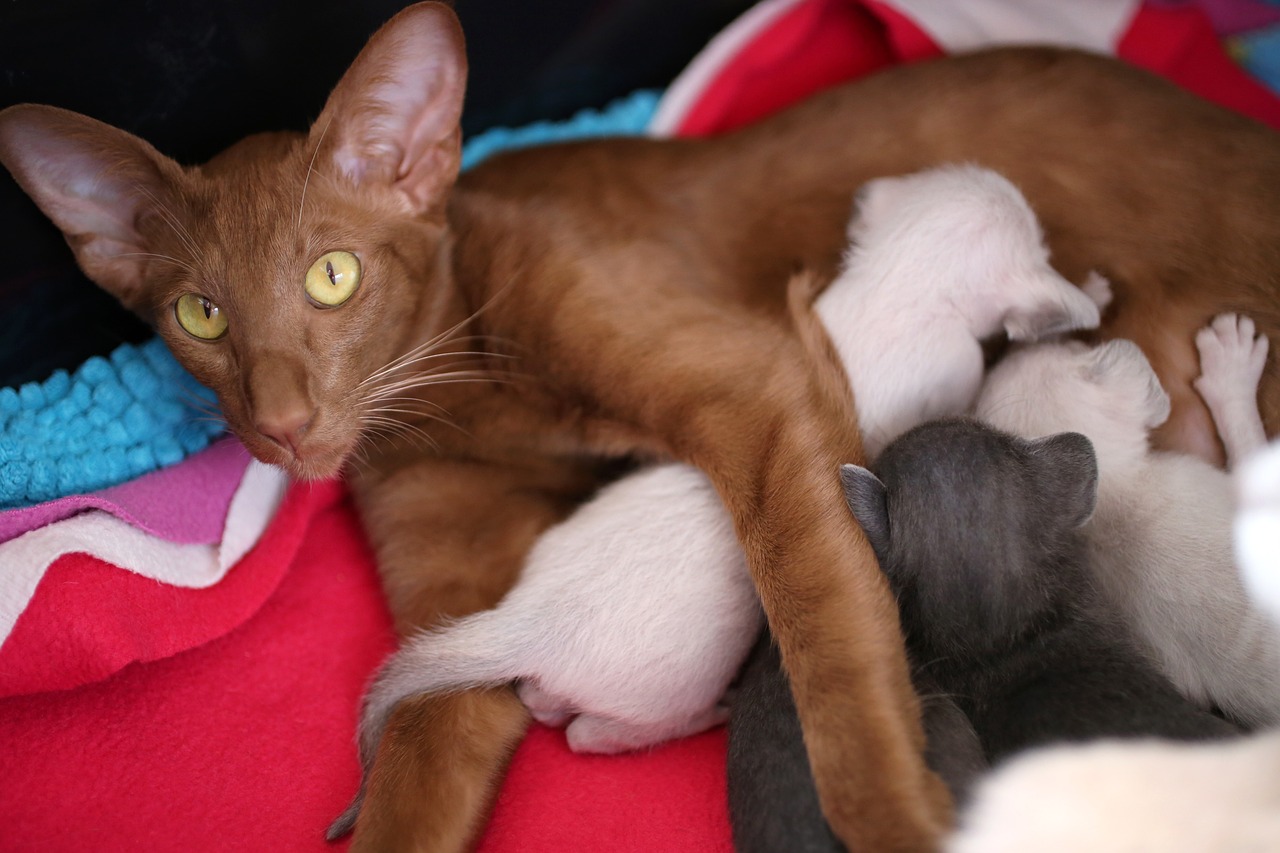Welcoming a litter of kittens into your home is an exciting and heartwarming experience. However, the journey from pregnancy to parenthood requires careful planning, attention, and dedication to ensure the health and well-being of both the mother cat (queen) and her kittens. In this comprehensive guide, we will discuss what to do when your pet cat gets pregnant, what to expect during the birth process, and how to provide optimal care for the queen and her newborns in the crucial postnatal period.
Recognizing Pregnancy in Cats
Early Signs of Pregnancy:
- Changes in Behavior: A pregnant cat may become more affectionate or, conversely, more reserved.
- Changes in Appetite: Some cats experience an increase or decrease in appetite.
- Nipple Changes: Enlargement and pink discoloration of the nipples are common signs.
Confirming Pregnancy:
- Veterinary Consultation: A veterinarian can confirm pregnancy through palpation, ultrasound, or X-rays.
Preparing for Birth
Creating a Comfortable Birthing Space:
- Quiet and Secluded Area: Choose a quiet, warm, and secluded spot where the queen can feel safe.
- Comfortable Bedding: Provide a comfortable bed with soft blankets or towels.
- Whelping Box: Consider using a whelping box to contain the kittens and provide a secure space.
Gathering Essential Supplies:
- Clean Towels: Have clean towels ready for drying the kittens.
- Sterile Scissors: In case the queen needs assistance cutting umbilical cords.
- Heating Pad or Lamp: Maintain a warm environment for the kittens.
Emergency Contacts:
- Emergency Vet: Have your veterinarian’s contact information readily available.
- Emergency Animal Poison Control: Save the number in case of emergencies.
The Birth Process
Stages of Labor:
- Stage 1 (Pre-Labor): Restlessness, nesting behavior, and a decrease in body temperature.
- Stage 2 (Active Labor): Contractions and the birth of kittens.
- Stage 3 (Post-Labor): Cleaning, nursing, and bonding with the kittens.
Assisting the Queen:
- Observation: Monitor the queen from a distance, intervening only if necessary.
- Umbilical Cord Cutting: If the queen doesn’t cut the cord, use sterile scissors to do so, leaving an inch attached to the kitten.
- Removing Membranes: If the queen doesn’t remove membranes, gently do so to allow the kitten to breathe.
When to Seek Veterinary Assistance:
- Prolonged Labor: If active labor exceeds two hours without progress.
- Excessive Bleeding: Persistent bleeding or signs of distress in the queen.
- Health Issues: If the queen appears unwell or in pain.
Postnatal Care for Mother and Kittens
Nutrition and Hydration:
- High-Quality Food: Provide a nutritionally balanced diet for the nursing queen.
- Fresh Water: Ensure a constant supply of clean, fresh water.
- Supplements: Consult your vet about necessary supplements for the queen.
Monitoring the Queen:
- Post-Birth Checkup: Schedule a post-birth checkup for the queen within a few days.
- Behavioral Changes: Watch for changes in the queen’s behavior, appetite, and litter box habits.
Kitten Care:
- Observation: Monitor the kittens for weight gain, proper feeding, and general well-being.
- Umbilical Cord Care: Keep an eye on the kittens’ umbilical cords for signs of infection.
- Handling: Limit handling during the first week to allow the queen to bond with her kittens.
Medical Care for Kittens:
- Vaccination Schedule: Discuss a vaccination schedule with your vet.
- Deworming: Follow your vet’s recommendations for deworming.
- Parasite Control: Implement flea and tick control measures as advised.
Adoption Considerations and Spaying
Adoption Planning:
- Screening Potential Adopters: Ensure responsible and caring homes for the kittens.
- Adoption Fee: Consider charging a reasonable adoption fee to cover initial veterinary expenses.
Spaying the Queen:
- Post-Weaning Period: Plan spaying after the kittens are weaned.
- Benefits of Spaying: Prevents unwanted litters and reduces the risk of certain health issues.
Tips for Multi-Cat Households
Introducing the New Arrivals:
- Gradual Introduction: Allow existing cats to gradually meet the new kittens.
- Supervised Interactions: Monitor interactions to ensure a positive environment.
Ensuring Sufficient Resources:
- Food and Water: Provide separate feeding areas to avoid competition.
- Litter Boxes: Ensure multiple litter boxes are available.
Celebrating New Life and Responsible Pet Parenthood
Bringing new life into your home through the birth of kittens is a remarkable and joyous occasion. By understanding the stages of pregnancy, preparing for birth, and providing postnatal care, you contribute to the health and well-being of both the mother cat and her kittens. Additionally, responsible pet parenthood involves considering adoption, spaying, and creating a harmonious environment for multi-cat households.
As you embark on this journey of feline family expansion, remember that each cat is unique, and your attentive care and love are vital for their growth and happiness. By following these comprehensive guidelines, you’re not only ensuring the health of your feline family members but also contributing to responsible pet ownership and the well-being of the broader feline community.

